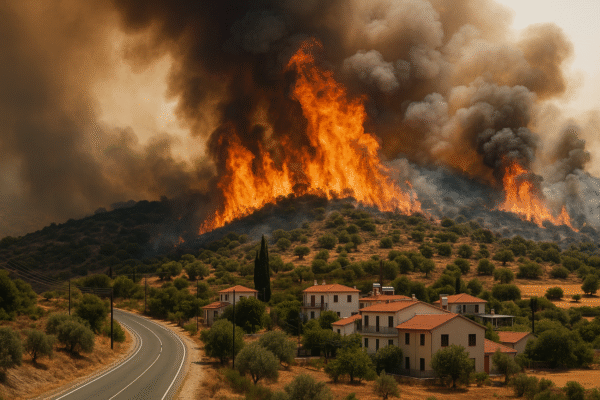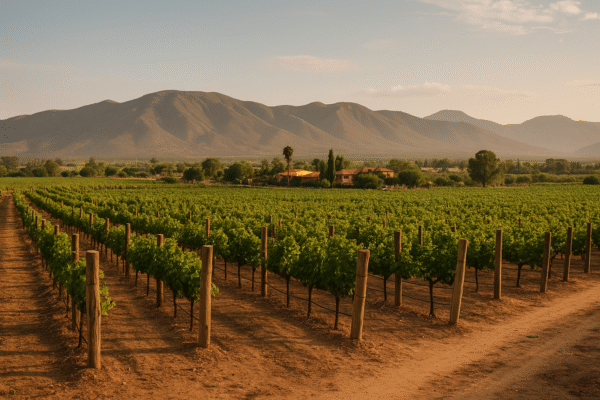Mexico has officially joined the ranks of global wine tourism leaders, standing alongside renowned destinations such as France, Italy, Spain, the U.S., Argentina, and Portugal. Spearheading the country’s wine tourism boom are the regions of Valle de Guadalupe in Baja California, Querétaro in central Mexico, and the historic wine town of Parras de la Fuente in Coahuila. Together, these destinations are redefining Mexican travel with immersive wine experiences rooted in sustainability, innovation, and deep cultural heritage.
According to data from Mexico’s Secretariat of Tourism (SECTUR), wine tourism generated more than 10 million pesos in 2024, welcoming over 2 million domestic and international wine tourists. The country is now leveraging global partnerships and enotourism strategies to expand its reach, collaborating with world leaders in wine production like Italy and France through industry exchange programs and sustainable viticulture initiatives.
Valle de Guadalupe: The Napa of Mexico
Nestled in Baja California, just two hours south of San Diego, Valle de Guadalupe accounts for nearly 70% of Mexico’s wine production. The valley’s Mediterranean-like climate, ocean breezes, and mineral-rich soil provide ideal conditions for cultivating varietals like Tempranillo, Nebbiolo, and Sauvignon Blanc. The region is home to over 150 wineries, including the internationally acclaimed Monte Xanic, L.A. Cetto, and Adobe Guadalupe.
Valle de Guadalupe’s annual Vendimia Wine Harvest Festival in August draws thousands of visitors for wine tastings, grape stomping, and chef-led dinners. Travelers can indulge in sustainable luxury at eco-resorts such as Encuentro Guadalupe or dine at destination restaurants like Fauna and Deckman’s en el Mogor, which pair local wines with Baja-Med cuisine.
Querétaro: Sparkling Wines and Colonial Charm
Querétaro, situated just two hours from Mexico City, is emerging as the country’s sparkling wine capital. The region’s high-altitude vineyards produce crisp varietals perfect for méthode champenoise wines. With over 35 vineyards participating in the Querétaro Wine Cluster, visitors can explore boutique producers such as Freixenet México and Viñedos Azteca.
In 2024, Querétaro hosted its first “Festival de la Vendimia del Bajío,” combining wine tastings, traditional music, and local gastronomy. The event, backed by the state’s tourism board, positioned the region as an accessible and authentic wine destination. Querétaro’s integration of winemaking with UNESCO-listed colonial sites makes it especially appealing to culturally curious travelers.
Coahuila: Mexico’s Oldest Wine Heritage
For travelers seeking historical depth, Coahuila’s Parras de la Fuente is a must-visit. Founded in 1597, Casa Madero is the oldest winery in the Americas and a pioneer in organic and biodynamic winemaking. Nestled in an oasis surrounded by the Sierra Madre mountains, Parras offers guided vineyard tours, barrel tastings, and insights into centuries-old winemaking traditions.
In 2025, Casa Madero announced new sustainability initiatives, including solar-powered fermentation tanks and water conservation technologies, aligning with global eco-tourism trends. The state has launched the “Rutas del Vino de Coahuila” campaign to promote regional tourism and preserve its winemaking legacy.
Emerging Wine Regions: Zacatecas and Aguascalientes
Zacatecas and Aguascalientes are positioning themselves as up-and-coming wine destinations. The state of Zacatecas, traditionally known for its mining industry, is now developing boutique wineries in its high-altitude terrains. The Zacatecas Wine Route, introduced in 2024, includes vineyard tours, artisanal food pairings, and immersive experiences with local vintners.
Aguascalientes, meanwhile, is leveraging its proximity to Guadalajara and Mexico City to attract weekend wine travelers. With support from the State Secretariat of Tourism, the region is investing in wine festivals, wine-themed lodging, and digital marketing campaigns aimed at millennials and Gen Z travelers.
Sustainability and Cultural Immersion: Mexico’s Unique Value Proposition
Mexico’s entry into global wine tourism is not merely about competing with European traditions—it’s about offering something distinct. Many Mexican wineries prioritize sustainable viticulture, using organic farming, rainwater harvesting, and native vegetation preservation. In Baja California, the “Wine and Sustainability Alliance” launched in 2023 to promote green certifications and support carbon-neutral tourism.
The Mexican wine experience also integrates cultural heritage, from indigenous agricultural practices to colonial architecture and local crafts. Wine tourists are encouraged to engage with communities, learn about regional history, and savor authentic food-and-wine pairings rooted in local terroir.
Mexico’s Wine Tourism Forecast: Robust Growth Ahead
Mexico’s wine tourism market is projected to grow by 15% annually over the next five years, outpacing the Latin American average. According to ProMéxico and SECTUR, the federal government aims to position wine tourism as a core pillar of rural economic development by supporting small producers and promoting cross-border enotourism with the U.S.
In addition, Mexico is expected to expand its presence at international wine tourism fairs, including Vinexpo in Paris and FITUR in Madrid, where it will showcase its diverse regions, sustainable practices, and world-class enotourism infrastructure.
Conclusion
From the rolling vineyards of Valle de Guadalupe to the sparkling wine estates of Querétaro and the historic wineries of Coahuila, Mexico is uncorking a new chapter in its tourism economy. With its focus on sustainability, culture, and immersive experiences, the country is redefining what it means to travel for wine. As global enotourism flourishes, Mexico is no longer just a rising star—it’s a destination every wine lover should have on their radar.
Let the journey begin—one glass at a time.
For more travel news like this, keep reading Global Travel Wire


















